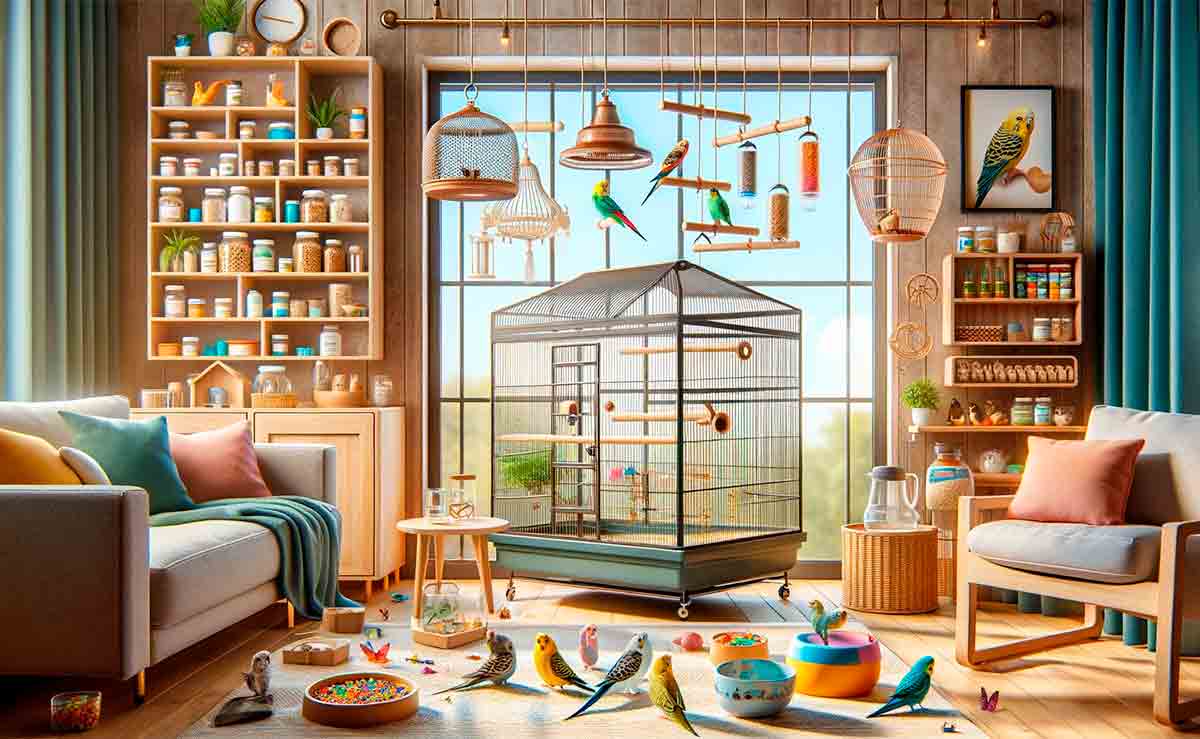
For those planning to have a bird as a pet and need to choose a species, Dr. Morgana Prado, a veterinarian specializing in unconventional pets at the Taquaral Veterinary Hospital in Campinas, provides guidance that will greatly contribute to the decision.
+ Video: Arnold Schwarzenegger Works Out with His Pet Donkey
She mentions that birds from the psittacidae family, being amusing, attract people who wish to have them. There are various species, such as cockatiels, parrot, cockatoo, tuim, agapornis, Australian budgerigar, eclectus parrot, ring-necked parakeet, macaw, lovebird, among others.
+ United States Seeks to Reactivate Norway’s Subterranean Naval Base Olavsvern
“They are intelligent and amusing birds; they interact with people, learn tricks and games, get along well as a couple, display vibrant colors, and transportation and handling, depending on the species and size of the bird, do not pose significant difficulties,” she enumerates.
Morgana explains that these feats result from a more developed brain. Due to their typical curved beaks, psittacids have a greater sensitivity to the taste of food and the ability to mimic speech, sounds, and words.
I want one! What now?
But before acquiring the bird, the prospective owner needs to gather various important pieces of information and research the peculiarities of the chosen species.
Dr. Morgana lists questions to which the person should pay attention:
- Is the species endangered?
- What is the average lifespan of this bird in captivity?
- Is there a purchase receipt to avoid encouraging the trafficking of animals?
- Is the breeding facility where birds are acquired without a purchase receipt, such as budgerigars, cockatiels, and agapornis, reputable and trustworthy?
- What is the environment where it will stay like?
- How should the cage be?
- How is it handled?
- Do they like toys, and which ones?
- How should the hygiene of the bird’s enclosure be done?
- What does it eat, how often should it be fed, and what should it not eat?
- Does it live alone? Or is it more interesting to have a pair?
The answers to these questions should be compared with the household routine to ensure the conviction that it is possible to handle the responsibilities of having a bird.
The veterinarian emphasizes that, depending on the species, these birds can live from 20 to 80 years. Therefore, it is not prudent, at the time of choosing the animal, to think only about the present but to ensure that the bird can be well cared for in the future.
Nutrition
Another essential piece of information is about nutritional habits. According to Dr. Morgana, the ideal foundation of the diet is daily extruded pellets, which are a balanced and complete food. “It has been debunked that the main food for birds is seeds, especially sunflower seeds. They do like them, but seeds should be given two to three times a week as a treat. “Seeds and nuts, rich in omega, bring benefits but should be administered in moderation because the fat in them can overload the liver,” she instructs.
Psittacids also enjoy dark green vegetables and fruits. Dr. Morgana says they have a taste for citrus. These foods can be offered freely. Additionally, according to the veterinarian, there are other sources of vitamins that can be served weekly, such as boiled corn, boiled egg, and chili pepper. However, be cautious about prohibited foods such as lettuce and avocado.
Children at home?
If there are children at home, Dr. Morgana recommends smaller species like cockatiels and budgerigars. Agapornis is also a small bird but tends to be more skittish. However, if brought home as a chick and has contact with humans from then on, it will become tame, and the risk of accidents is lower. “But they have a strong personality, and due to the curved beak, they can bite a lot and cause significant injury to a child. 100% safety cannot be guaranteed,” emphasizes the doctor.
Wing trimming with a veterinarian
Dr. Morgana explains that if the birds are not handled much but will remain in aviaries, their wings do not need to be trimmed. She mentions that many owners ask to trim them to release the bird at home to fly around. “But it should be emphasized that this release must be supervised. The bird cannot live freely, as there is a chance it may escape. If it hears a different noise, it could get scared and fly away,” she warns.
The risk of escape occurs because wing trimming must be done in a way that allows the bird to glide; otherwise, it may injure itself in falls, collide with walls and windows, with a risk of injury. According to Dr. Morgana, the goal of the trimming is to prevent high flights and should be repeated every three months or monthly. “It is important to trim the wings in a clinic with a specialist. The trimming is done according to the environment and depends on the animal, how it was raised, whether it already knows how to fly or not. Doing it at home is risky. If it’s too much, there can be bleeding and pain,” notes the veterinarian.
When to consult a specialist?
Birds are exotic animals, and the recommendation for unconventional pets is to care for health through preventive medicine. Ideally, take the bird to a consultation with the veterinarian every six months for a clinical examination. The professional will refer to further tests such as blood and feces annually.
Dr. Morgana claims that these types of animals generally hide symptoms or are not well when they are not. Usually, when something is noticed, the change has already occurred. “The recommendation is always to observe the droppings, the amount of food and water the animal is ingesting, whether it is apathetic, whether it is at the bottom of the cage, whether the feathers are erect, whether the color of the feathers is changed… These are some signs that should be examined by a specialist,” advises the doctor.

